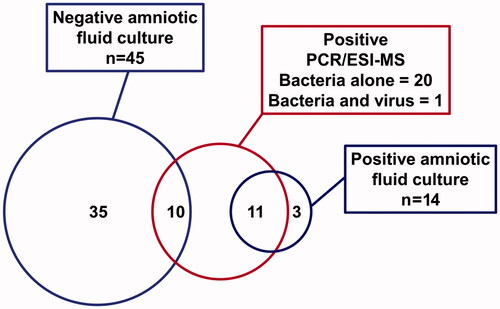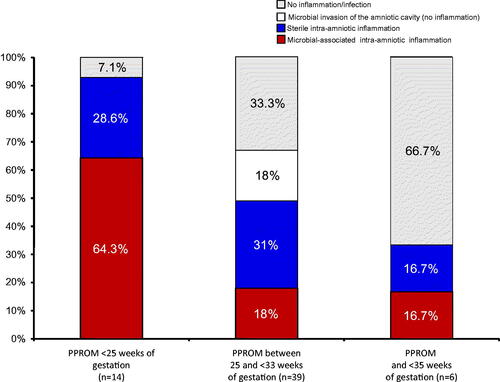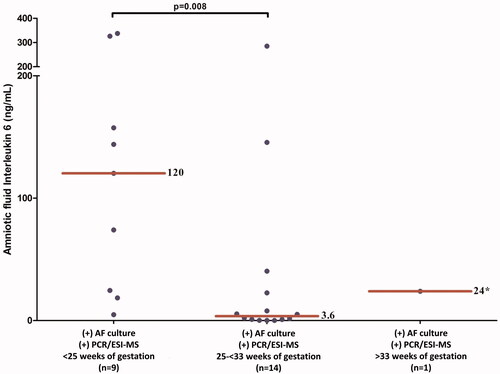Figures & data
Table 1. Maternal characteristics and demographic data of the study population.
Figure 1. Bacteria and viruses detected in amniotic fluid of patients with preterm PROM standard cultivation techniques versus PCR/ESI-MS. Amniotic fluid culture includes routine cultivation techniques for bacteria (aerobes, anaerobes and genital mycoplasmas). PCR/ESI-MS refers to broad range PCR and ESI-MS.

Table 2. Amniotic fluid IL-6 concentrations, white blood cell count, placenta pathology results, pregnancy outcome, microorganisms and microbial burden detected in the amniotic fluid of patients with PPROM using cultivation techniques versus PCR/ESI-MS.
Figure 2. Prevalence of microbial – associated and sterile intra-amniotic inflammation in patients with preterm PROM according to the gestational age at diagnosis. The earlier the gestational age at which rupture of the membranes occurs, the higher the frequency of both microbial-associated and sterile intra-amniotic inflammation.

Figure 3. Amniotic fluid concentrations of interleukin 6 in patients with a positive AF culture or PCR/ESI-MS according to the gestational age at which the rupture of the membranes occurred. Patients who presented with preterm PROM <25 weeks of gestation with a positive AF culture or PCR/ESI-MS had a significantly higher AF IL-6 concentrations than those who presented with a positive AF culture or PCR/ESI-MS between 25 and <33 weeks of gestation.

